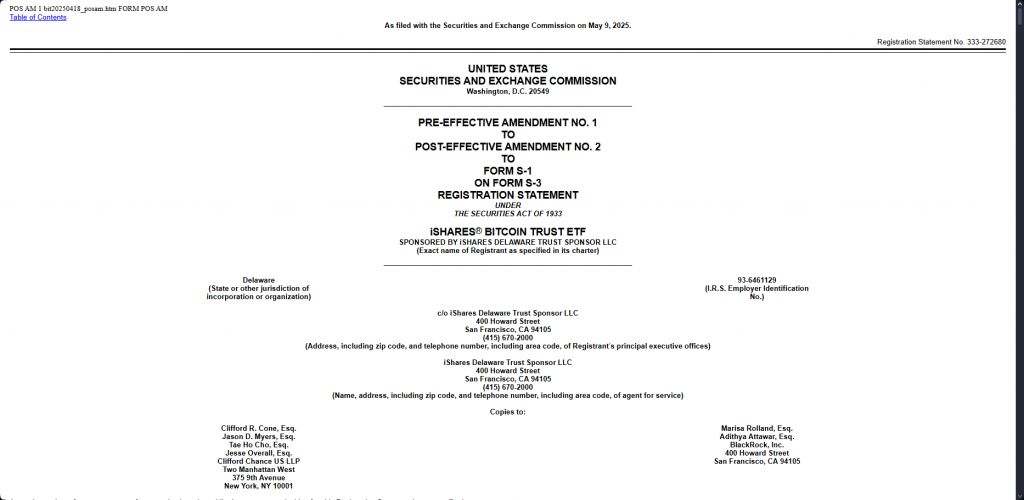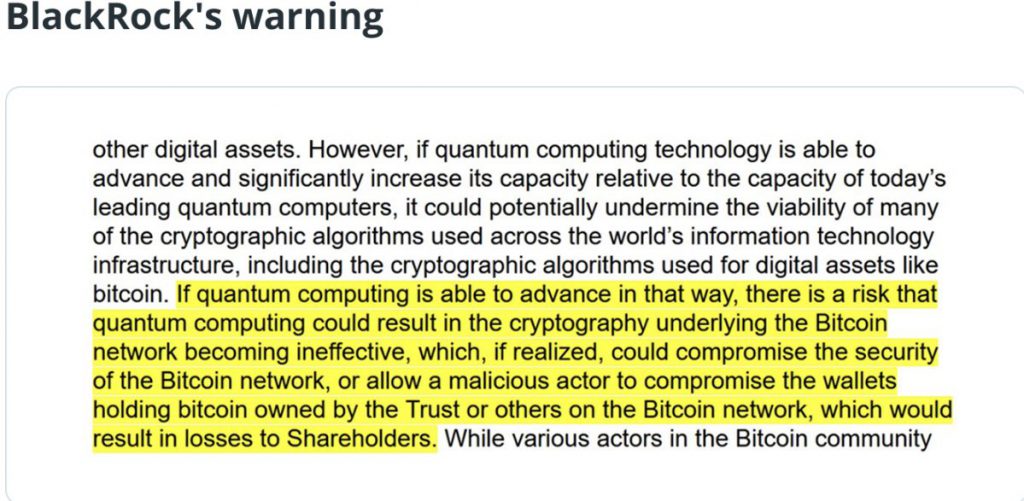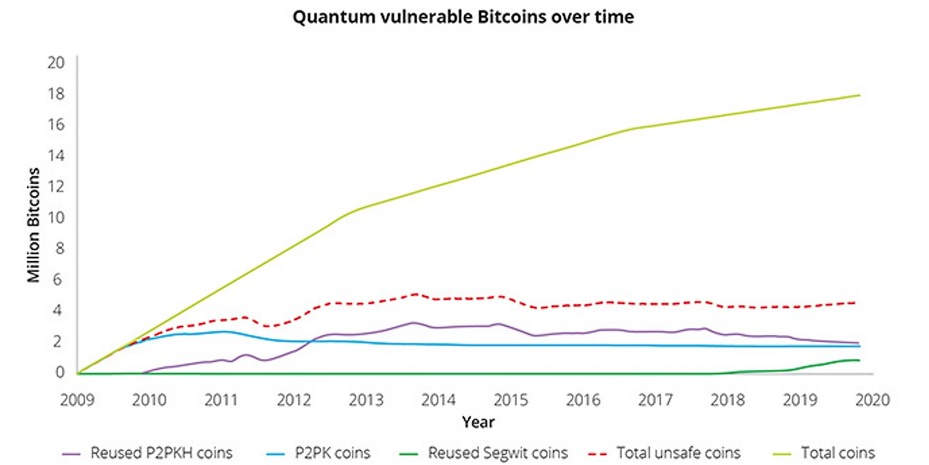BlackRock Warns: Quantum Computing Could Shatter Bitcoin’s Security
Wall Street’s trillion-dollar gorilla just threw a quantum wrench into crypto’s gears.
BlackRock’s latest risk assessment flags quantum computing as an existential threat to Bitcoin—turns out those unhackable private keys might not be so unhackable after all. Who knew?
Here’s the kicker: While banks pour millions into quantum-proof blockchains, Bitcoin’s 14-year-old cryptography suddenly looks like a sandcastle at high tide. But hey—at least the ’number go up’ crowd will have something new to FUD about.
Funny how the same firm pushing spot BTC ETFs is now hedging its bets with doomsday scenarios. Classic Wall Street—selling shovels and flood insurance at the same time.
 Blackrock iShares Bitcoin Trust ETF SEC Application – Source: SEC,gov
Blackrock iShares Bitcoin Trust ETF SEC Application – Source: SEC,gov
Can Cryptocurrency Survive a Quantum Leap That Breaks Bitcoin?

The quantum computing bitcoin threat has moved from theoretical to documented institutional concern, and BlackRock’s filing specifically states that quantum computing could

Source: SEC.gov
BlackRock stated in their filing:
Understanding the Quantum Computing Bitcoin Threat Right Now

Current quantum computers process multiple possibilities simultaneously, and this is unlike traditional systems that work one calculation at a time. Bitcoin’s security relies on SHA-256 and also ECDSA cryptographic systems that have protected the network for years. However, powerful quantum machines could potentially reverse-engineer private keys from public addresses during transaction broadcasts.
At the time of writing, researchers estimate quantum computing Bitcoin threat realization remains 10-20 years away, though roughly 25% of existing Bitcoin sits in older wallet formats that are more vulnerable to quantum attacks. This timeline has prompted serious cryptocurrency industry preparation efforts right now.
Industry Response to Quantum Computing Bitcoin Threat
The cryptocurrency sector isn’t waiting passively, and developers have proposed the Quantum-Resistant Address Migration Protocol (QRAMP) to migrate Bitcoin from vulnerable formats to quantum-safe algorithms, though this WOULD require an extensive network hard fork.
Some blockchain networks already implemented quantum-resistant measures. Algorand integrated NIST-approved Falcon algorithms, and also the Quantum Resistant Ledger uses XMSS hash-based signatures designed specifically for quantum threats.
Institutional Recognition of Quantum Risks
BlackRock’s quantum computing Bitcoin threat disclosure carries significant weight given their $11.6 trillion in managed assets, and including quantum risks alongside traditional cryptocurrency concerns like volatility signals institutional recognition that this threat requires immediate attention.

The warning affects cryptocurrency markets already navigating Bitcoin halving countdown cycles and also ongoing currency substitution discussions between digital assets and the United States dollar. For investors, this represents another complexity in cryptocurrency risk assessment right now.
BlackRock’s formal quantum computing Bitcoin threat warning transforms hypothetical scenarios into documented institutional concerns. As cryptocurrency markets continue evolving through Bitcoin halving countdown events and currency substitution debates with traditional assets like the United States dollar, quantum computing adds critical urgency to Bitcoin’s long-term security planning at the time of writing.

